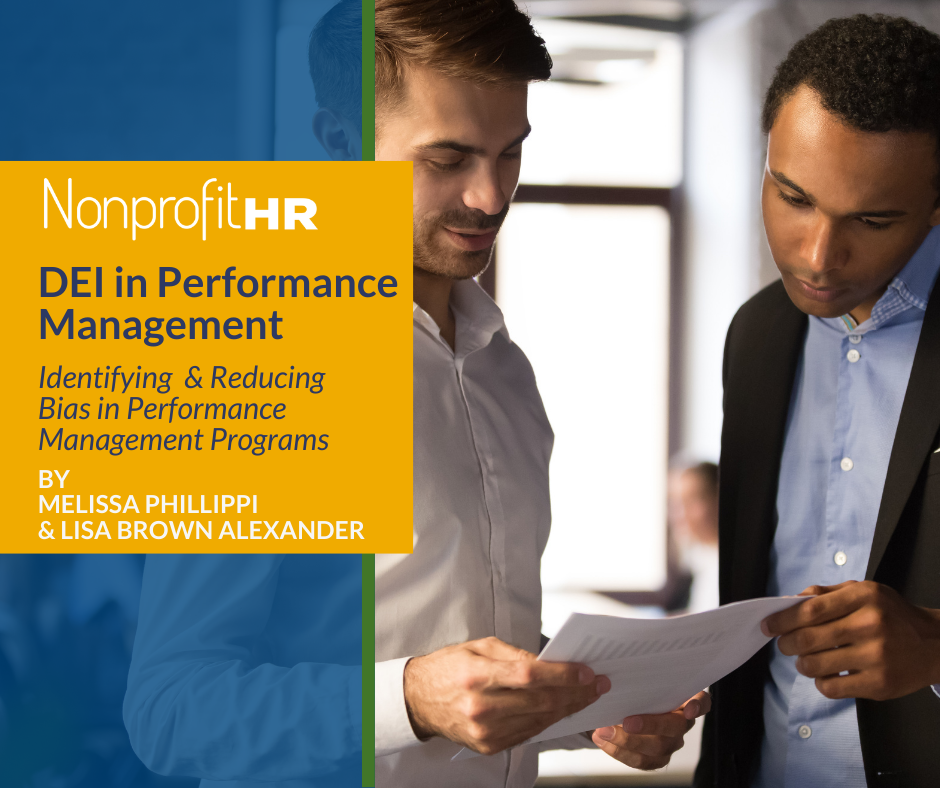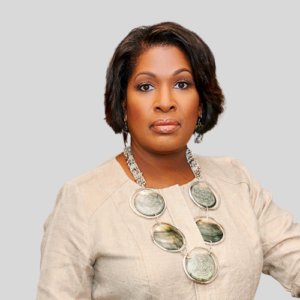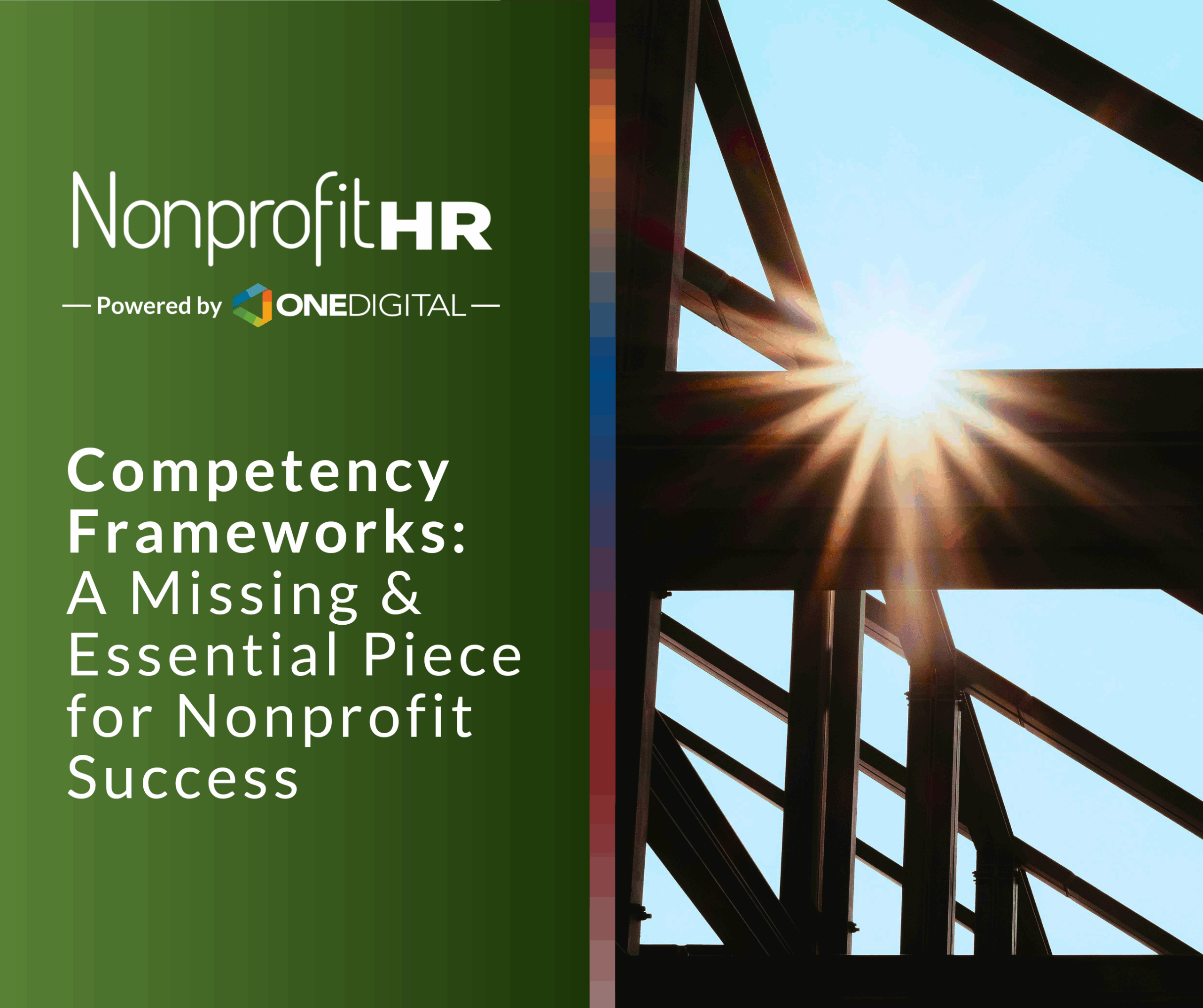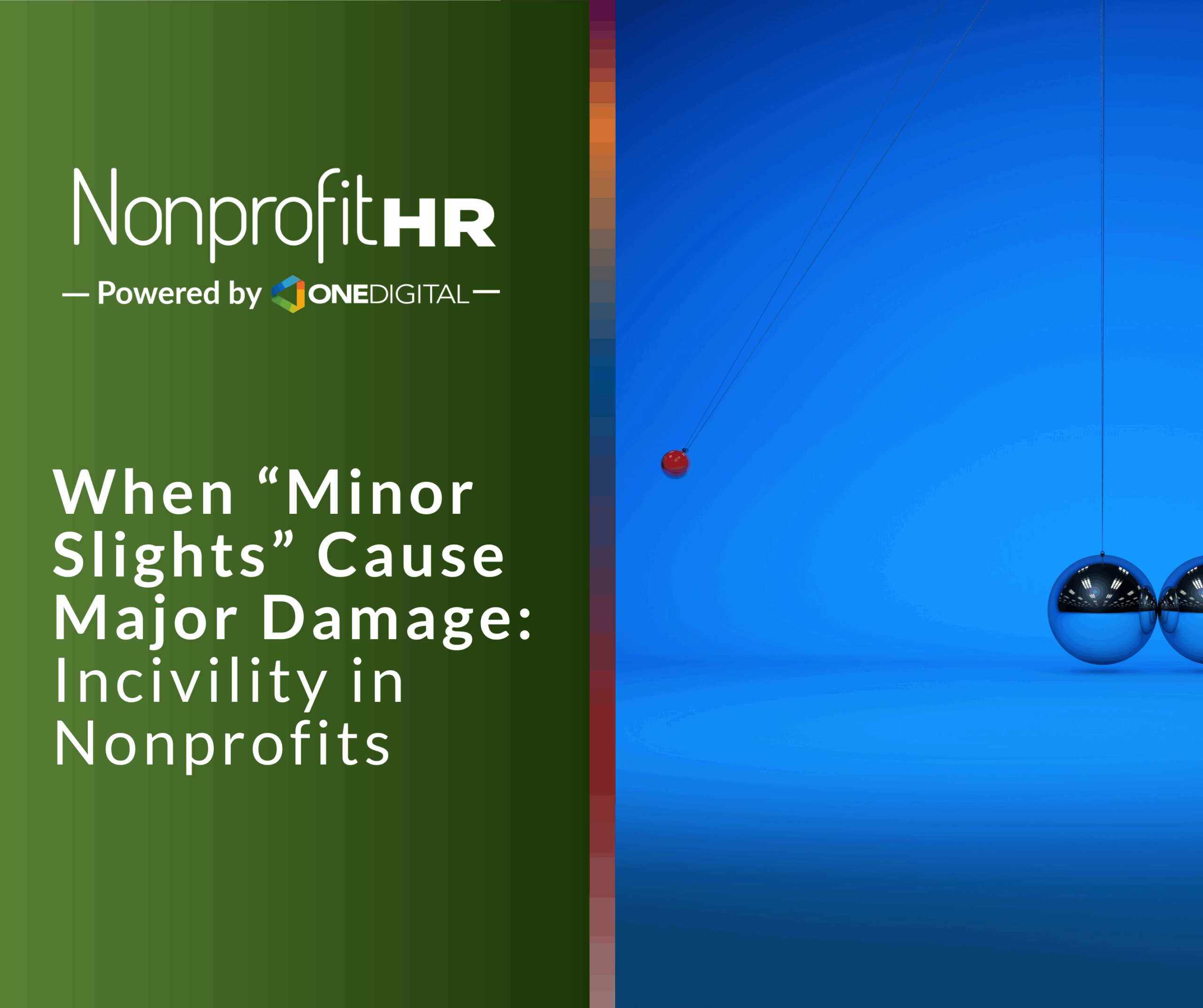WTOP: 5 ways nonprofits can…
 DEI – Identifying and Reducing Bias in Performance Management Programs
DEI – Identifying and Reducing Bias in Performance Management Programs
We all carry biases. We cannot reduce biases if we do not first acknowledge that they exist. In this article, we discuss the danger of personal and systemic biases in relation to performance management practices, as well as how we as HR professionals may identify biases we may not currently be aware of, personally and organizationally. By explicitly defining diversity, equity, and inclusion in the workplace, we may begin to understand how to locate potential biases and implement simple, focused steps toward reducing them.
The key to realizing workplace improvements around diversity, equity, and inclusion (DEI) is both humility and a willingness to move in the right direction. While tackling such a big challenge may feel overwhelming at first glance, let us take a step back and actually define what DEI tangibly looks like.
Diversity at its core is the presence of differences within a given setting. This includes identifiers like race, gender, ethnicity, age, and religion. Some sub-diversities may include things like heritage, social class, or sexual orientation.
Inclusion refers to individuals with different identities feeling and/or being valued, leveraged, and welcome within a given setting. Essentially, all individuals are invited to have a seat at the table.
Equity is an approach that recognizes the unique disparities within a system and provides relevant support systems for overcoming barriers. At the root, it is a level playing field for all, especially if it was not level to begin with.
Broken down even further, DEI falls within 2 buckets: our personal journey and our systems work. Our personal journey includes biases we may carry with us, perhaps from our childhood, that we are or are not yet aware of. Our systems work refers to our concentrated effort at the organizational level to dismantle inequitable behaviors. In order to rebuild systems equitably, we have to be willing to modify behaviors and the power structures that support them at the individual and system levels.
Besides the moral and ethical reasons, why should organizations and HR professionals care about DEI in the workplace? In a report published by McKinsey&Company in 2018, the data revealed that companies in the top-quartile for gender diversity present within their executive teams were 21% more likely to have above-average profitability than companies in the 4th quartile. For ethnic/cultural diversity, top-quartile companies were 33% more likely to outperform on profitability.
Additionally, a BCG Henderson Institute article revealed in 2018 a two-part data point: companies with below-average diversity scores found that only 26% of their revenue came directly from innovation. In contrast, companies with above-average diversity scores experienced 45% of their revenue coming directly from innovation. The information is clear: diversity=better business results.
Now we are left with the question of how DEI in the workplace is correlated to tangible performance results. Is there a relationship here?
After years of research, case studies, and our own personal business experience, we can all agree that employee engagement is directly tied to performance results. The more engaged the employee, the more likely they are producing results that outweigh their cost to the organization. In a workplace where diversity, equity, and inclusion are lacking, at an absolute minimum, this will impact those on the “outside.” Those employees who have picked up on the personal or systemic biases living within individuals and organizations, those who do not feel utilized or leveraged, or those who know they do not have a real seat at the table, are not engaged and, therefore, are more than likely not producing the best results.
There is also the risk of a self-fulfilling prophecy. Our biases create an invisible wall that prevents deeper professional relationships with those who the bias is against. When healthy workplace relationships are not created between the two parties, coaching, mentoring, and professional development are unlikely to happen, resulting in the person who is receiving the bias not having an equitable chance at career advancement and/or business impact. Not to mention the bias receiver (the person who the bias is against) is likely feeling dissatisfied, frustrated, or stuck and unable or unwilling to perform at their optimal level. When performance review time comes, it is doubtful they will be scored as a star performer. You cannot build a healthy relationship when biases are present. To add another layer, we must be extremely careful that performance management is not solely based on the strength of the relationship between the two parties but on the results the individual achieves and the impact on the organization.
You simply cannot improve what you do not first inspect. So how might an organization run a sort of “litmus test” to evaluate if or where these biases are present in their performance management practices?
One practical place to start is performing an audit on promotional pay, hiring, and firing practices. Are there any patterns you see that correlate with age, gender, ethnicity, or religion? (For the purpose of this article, we will stay with these primary diversity identifiers). For example, are employees with similar backgrounds and positions being promoted with percentages that are different from each other? If so, why? At a minimum, organizations and HR professionals can start the evaluation of DEI in the workplace with an equity audit.
But what if I am an HR team of one? What if my company is small and already stretched thin? Thankfully, there are third-party organizations that specialize in providing equity audits by analyzing your data for you and searching for any patterns or discrepancies. Additionally, an objective party performing this kind of audit will also warrant more integrity than an internal employee or team doing so.
When it comes to the performance management process, how do we reduce bias and inequality in ratings or outcomes? First, consistent, documented conversations provide a way to review the progress of coaching and mentoring between managers and their direct reports throughout the performance review cycle. Utilizing a performance management software system, like Performance Culture, for example, can eliminate lengthy, paper-based performance reviews and hold the information in one online space.
Secondly, clearly defining goals and expected behaviors, as well as proper training around both, sets the employee and manager up for success by avoiding assumptions and incorrect expectations.
Incorporating a practice of multi-rater feedback assists in reducing biases from influencing performance evaluation. In addition to multiple raters, utilizing a tool, such as the Performance-Values Matrix, allows for a quick inspection of potential rater bias through an easy calibration review and process. Using a visual aid to plot where employees fall with regard to both performance and behaviors highlights potential patterns in ratings that were otherwise hidden without a visual representation.
Lastly, DEI training may be an ideal choice for any organization size. Keep in mind, however, true diversity, equity, and inclusion practices do not end with just participating in training but must be an integral part of company culture. To eliminate personal and systemic biases, thinking, behavior, and shifts in power dynamics must occur at the personal and systemic level.
We all carry biases. While tackling the DEI conversation may feel like a daunting task, remember that it is always better to do something about one thing instead of doing nothing about everything. Choose one step to take toward DEI in the workplace and it will make that next step more manageable. Reducing biases starts with me and you.
[1] McKinsey & Company. (2018, January) Delivering Through Diversity.https://www.mckinsey.com/~/media/mckinsey/business%20functions/organization/our%20insights/delivering%20through%20diversity/delivering-through-diversity_full-report.ashx
[2] Lorenzo, Voigt, Tsusaka, Krentz, Abouzahr. (2018, January 23) How Diverse Leadership Teams Boost Innovation,https://www.bcg.com/en-us/publications/2018/how-diverse-leadership-teams-boost-innovation
By
 |
 |
| Lisa Brown Alexander President & CEO Nonprofit HR |
Melissa Phillippi Co-Founder & President Performance Culture |
About Performance Culture

Download a new case study from Performance Culture now!
About Nonprofit HR
Nonprofit HR is the country’s leading and oldest firm focused exclusively on the talent management needs of social impact organizations. We focus our efforts on strategic and advisory project-based human resources consulting, HR outsourcing, search and diversity, equity and inclusion. Nonprofit HR also offers customized trainings, research and events, all with the objective of strengthening the people management capacity of the workforce.
Since 2000, our staff of credentialed experts have advanced the impact of some of the world’s most influential brands in the sector.





























